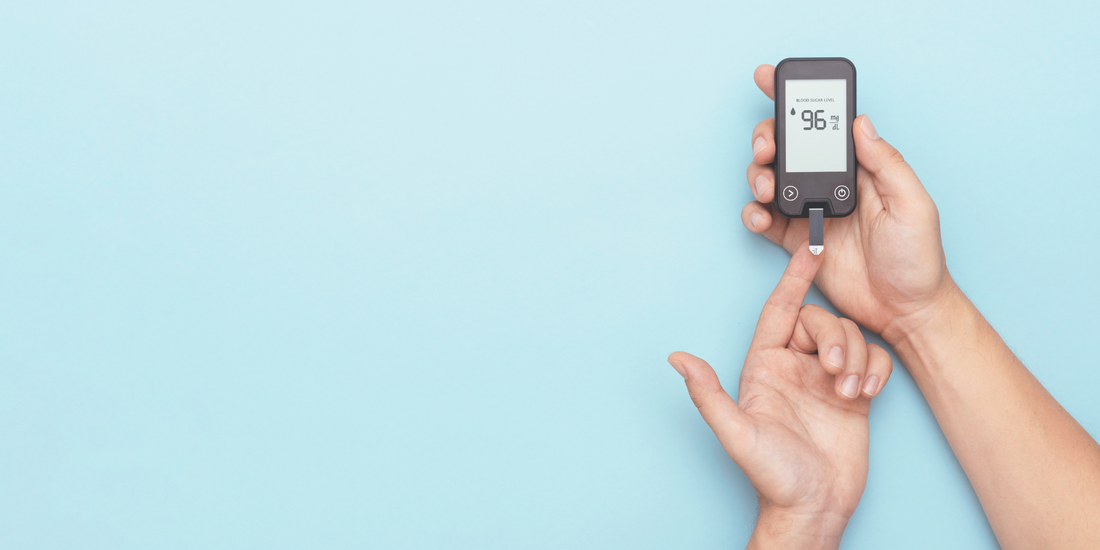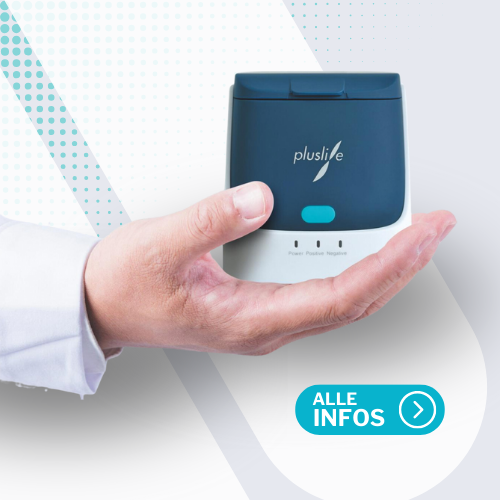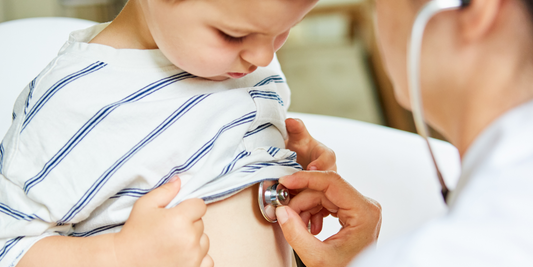
Health guide: Living with diabetes - everything important about the disease
Prevalence and types of diabetes
Diabetes mellitus is a widespread metabolic disease, which is characterized by chronically increased blood sugar levels. In Germany, around 7.5 million people are affected by diabetes, with around 10% of those affected suffering from type 1 diabetes and about 90% of type 2 diabetes. Diabetes mellitus, especially type II diabetes, has developed into a widespread common disease in many countries, including Germany. According to the International Diabetes Federation (IDF), over 463 million people worldwide have diabetes, and the number of people affected increases steadily.
Costs in Germany
Diabetes represents a significant financial burden on the health system. In Germany, the total cost of diabetes was about 35 billion euros per year estimated. This sum is made up of direct and indirect costs:
- Direct costs: It is estimated that the direct costs amount to about 21 billion euros per year. These include expenses for medication, medical care and the treatment of diabetes complications.
- Indirect costs: The indirect costs are about 14 billion euros per year estimated. This includes productivity losses, nursing costs and the economic consequences through premature death.

Differentiation between type I and type II diabetes
Diabetes mellitus comprises various clinical pictures, with type I and type II being the most common forms. Although both forms are characterized by chronically increased blood sugar levels, they differ significantly in their causes, pathophysiology, frequency and treatment.
Type I diabetes
Causes:
- Autoimmune disease: Type I diabetes is caused by an autoimmune reaction in which the immune system attacks and destroys the insulin -producing beta cells of the pancreas.
- Genetic predisposition: There is a genetic component that increases the risk of type I diabetes. Certain genes such as HLA-DR3 and HLA-DR4 are associated with a higher risk.
- Environmental factors: Virus infections or other environmental factors could act as a trigger for the autoimmune reaction.
Risk factors:
- Family preliminary stress
- Certain genetic markers
- Possible virus infections in childhood
Symptoms:
- Fast insertion of symptoms
- Strong thirst
- Frequent urination
- Weight loss despite normal or increased food intake
- Fatigue and weakness
- See blurry
Pathophysiology:
- Insulin deficiency: The destruction of the beta cells produces no or very little insulin.
- Dependence on insulin therapy: Patients rely on lifelong insulin therapy in order to control the blood sugar level.
Treatment:
- Insulin therapy: multiple daily insulin injections or the use of an insulin pump.
- Blood sugar measurement: regular monitoring of blood sugar levels.
- Diet change and physical activity to support insulin therapy.
Type II diabetes
Causes:
- Insulin resistance: The body cells no longer respond sufficiently to insulin, which leads to an increased blood sugar level.
- Increased insulin production: The pancreas tries to compensate for increased blood sugar by increased insulin production, which leads to the exhaustion of the beta cells in the long term.
- Lifestyle factors: Obesity, lack of exercise and unhealthy nutrition are essential risk factors.
Risk factors:
- Obesity and obesity
- Lack of exercise
- Unhealthy diet
- Age over 45 years
- Family preliminary stress
- High blood pressure and high cholesterol levels
Symptoms:
- Slow insertion of the symptoms
- Fatigue and weakness
- Frequent urination
- Strong thirst
- Slow healing of wounds
- Deaf feeling or tingling in your hands or feet
Pathophysiology:
- Insulin resistance: The cell's cells are less sensitive to insulin.
- Relative insulin deficiency: Over time, the pancreas cannot produce enough insulin to cover the increased need.
Treatment:
- Lifestyle changes: weight loss, change in nutrition and increased physical activity.
- Oral antidiabetics: medication such as metformin help to lower blood sugar levels.
- Insulin therapy: In the case of advanced disease, insulin therapy may be necessary.
- Regular blood sugar measurement: to monitor and control the blood sugar level.

Rare types of diabetes:
Gestational diabetes (pregnancy diabetes)
Causes:
- Hormonal changes: During pregnancy, the body produces more hormones that support the development of the baby. However, some of these hormones, such as human placental tales (HPL) and progesterone, can block the insulin effect, which is called insulin resistance.
- Insulin resistance: In order to cover the needs of the growing baby, the mother's body has to produce more insulin. In some women, the pancreas cannot produce enough insulin to cover the increased demand, which leads to an increase in blood sugar levels.
Risk factors:
- Obesity and obesity: Women who are overweight before pregnancy have a higher risk of developing gestational diabetes.
- Family preload: A genetic predisposition also plays a role. Women whose close relatives suffer from diabetes have a higher risk.
- Age: Older pregnant women (over 25 years) have a higher risk.
- Previous gestational diabetes: Women who had gestational diabetes in pregnancy have an increased risk of developing it again.
- Ethnic Origin: Some ethnic groups, such as women from South and East Asia, Africa, Caribbean and the Middle East, have a higher risk of developing gestational diabetes.
Affected:
- Women during pregnancy. In Germany, at least 45,000 women develop pregnancy diabetes every year. This metabolic disorder, which occurs for the first time during pregnancy, is one of the most common complications during pregnancy. The number of those affected has been increasing continuously for years. This is partly due to an increasing number of overweight pregnants, but also to improved screening methods that lead to a more common diagnosis
Treatment
The treatment is always based on the cause and extent of the disease and is always to be viewed individually.
Diet change:
- A healthy, balanced diet is crucial. Pregnant women should consume several small meals a day to keep the blood sugar level stable.
- Reduction of sugar -containing foods and fast carbohydrates in favor of fiber -rich and complex carbohydrates.
- Recommendations for specific diet plans can be provided by nutritionists or diabetologists
- Regular physical activity helps to lower blood sugar levels and improve insulin sensitivity.
- Easy to moderate exercises such as walking, swimming or special pregnancy gymnastics are often recommended.
Blood sugar self -control:
- Regular self -controls of the blood sugar level with a blood sugar meter are necessary to monitor the effectiveness of the therapy and make adjustments.
- Typically, the values are measured before and after meals and before going to bed
Insulin therapy:
- If the change of diet and movement is not sufficient to control blood sugar levels, insulin therapy may be necessary.
- Insulin is usually administered in the form of injections. The dosage and frequency depend on the individual blood sugar levels.
Regular medical monitoring:
- Frequent visits to the doctor to monitor the health of mother and child are important.
- Ultrasound examinations and other tests may be necessary to monitor the growth and development of the baby and to recognize complications.
After birth, the blood sugar level normalizes in most women. However, it is important to check blood sugar regularly after birth, as there is an increased risk of developing type 2 diabetes later in life.
Special types of diabetes:
- Lada (latent autoimmune diabetes in adults): a slower running autoimmundiabetes, which is often diagnosed in adults.
- Mody (Maturity-Oset Diabetes of the Young): A rare form of diabetes that is genetically determined and occurs at a young age.
Each type of diabetes requires an individual treatment strategy based on the specific needs and health conditions of those affected.

Summary
|
characteristic |
Type I diabetes |
Type II diabetes |
|
causes |
Autoimmune disease, genetic factors, environmental factors |
Insulin resistance, genetic factors, lifestyle factors |
|
Risk factors |
Family preliminary stress, genetic markers, viral infections |
Obesity, lack of exercise, unhealthy nutrition, age, family preload |
|
Symptoms |
Fast insertion, strong thirst, frequent urination, weight loss |
Slow use, fatigue, frequent urination, slow wound healing |
|
Pathophysiology |
Insulin deficiency, destruction of the beta cells |
Insulin resistance, relative insulin deficiency |
|
Treatment |
Insulin therapy, blood sugar measurement, change in diet |
Lifestyle changes, oral antidiabetics, insulin therapy, blood sugar measurement |
Type I and Type II diabetes require different approaches to prevention and treatment. While type I diabetes cannot be prevented, type II diabetes, prevention and lifestyle changes play a crucial role. Both types require careful surveillance and management to avoid complications and maintain quality of life.

Prevention of Type II diabetes as a decisive factor: primary, secondary and tertiary prevention
The prevention of type II diabetes includes various measures that are divided into three categories: primary, secondary and tertiary prevention. These measures aim to prevent the occurrence of the disease, to promote early detection and to improve the treatment and management of the disease.
Primary prevention
|
measure |
Goal |
Examples |
|
Dietary change |
Improvement of eating habits |
Promotion of a high -fiber, low -sugar diet, reduction in consuming saturated and trans fats, increasing the consumption of fruit, vegetables, whole grain products |
|
Physical activity |
Promotion of an active lifestyle |
At least 150 minutes of moderate movement per week, integration of movement into everyday life (e.g. climbing stairs, walking) |
|
Weight management |
Reduction of overweight and obesity |
Advice and support for weight loss, change in behavior and nutritional advice |
|
Enlightenment and education |
Increasing consciousness to diabetes risks |
Public campaigns for clarifying diabetes, training courses in schools, municipalities and at work |
|
Smoking cessation |
Reduction of the risk through smoke stop |
Programs for smoking cessation, support and advice for smokers |
Secondary prevention
|
measure |
Goal |
Examples |
|
Early detection and screening |
Early diagnosis of prediabetes and diabetes |
Regular blood sugar tests for risk opera, so-called HBA1C tests for monitoring the long-term blood sugar |
|
Regular health checks |
Monitoring of the state of health |
Annual health examinations, monitoring of blood sugar, blood pressure and cholesterol |
|
Lifestyle interventions |
Prevention of the progression of prediabetes to diabetes |
Intensive lifestyle programs for changing nutrition and movement, individual advice and support from nutrition experts and fitness trainers |
|
Medicine prevention |
Delay or prevention of diabetes development |
Prescription of antidiabetics and other medication for high -risk opera |
Tertiary prevention
|
measure |
Goal |
Examples |
|
Optimal medical treatment |
Control of blood sugar levels and avoiding complications |
Adjustment of medication (e.g. insulin, oral antidiabetic, regular blood sugar measurements and HBA1C controls |
|
Management of companions |
Reduction of risk for complications |
Treatment of high blood pressure, dyslipidemia and other comorbidities, regular check -ups (e.g. eyes, kidneys) |
|
Patient training and self -management |
Promotion of self -competence and personal responsibility |
Diabetes training programs, training in blood sugar measurement, insulin distribution and nutritional planning |
|
Psychosocial support |
Support in dealing with the disease |
Advice and psychological support, self-help groups and peer support |
|
Promotion of a healthy lifestyle |
Long -term improvement in health |
Continuation of healthy eating and movement habits, regular medical care and aftercare |
The prevention of type II diabetes requires a comprehensive and coordinated procedure that starts at all levels - primarily, secondary and tertiary. A combination of education, early diagnosis, continuous support and targeted interventions can significantly reduce the risk of the development and progression of diabetes.

Treatment of type I and type II diabetes
The treatment of diabetes varies depending on the type of the disease, whereby the main goal is to keep blood sugar levels in the normal range and to avoid complications. Here are the main rates for the treatment of type I and type II diabetes:
Treatment of type I diabetes
Insulin therapy
- Daily insulin injections: People with type I diabetes have to inject insulin daily because their body does not produce insulin. There are different types of insulin (fast -acting, short, long -acting and mixed insulin) that are combined as required.
- Insulin pumps: These devices continuously release insulin and can hand over additional insulin (bolus) before meals if necessary.
Blood sugar control
- Regular blood sugar measurement: Several daily measurements are required to monitor blood sugar levels and adapt the insulin dose.
- Continuous glucose measurement systems (CGMS): These devices continuously measure the glucose level in the tissue and can trigger alarms if the values are too high or too low.
Dietary change
- Carbohydrate count: Learn patients to calculate the carbohydrate intake in order to adapt the insulin dose accordingly.
- A balanced diet: A healthy, balanced diet helps to keep blood sugar levels stable and to promote optimal health.
Physical activity
- Regular exercise: sport improves insulin sensitivity and helps to control the blood sugar level.
Training and self -management
- Diabetes training programs: These programs help patients to better understand and manage their illness.

Treatment of type II diabetes
Lifestyle changes
- Weight management: Losing weight can improve insulin sensitivity and reduce blood sugar levels.
- Healthy eating: A fiber -rich, low -sugar and low -fat diet helps to control the blood sugar level.
- Physical activity: Regular movement improves insulin sensitivity and promotes weight loss.
Medical therapy
- Oral antidiabetics: medication such as metformin, sulfonyluries, gliptins, and Sglt2 inhibitors help to lower blood sugar levels.
- Non-insulin-based injectable medication: GLP-1 receptor agonists can increase insulin secretion and reduce the feeling of hunger.
- Insulin therapy: In advanced stages, diabetes insulin may also be necessary for Type II.
Blood sugar control
- Regular blood sugar measurement: Frequent measurements help to monitor blood sugar levels and adapt the therapy.
- HBA1C test: This test measures the average blood sugar level of the past 2-3 months and helps to assess the long-term blood sugar control.
Treatment of comorbidities
- Blood pressure control: High blood pressure is often treated with medication to reduce the risk of cardiovascular complications.
- Cholesterol lowering: Statins and other medication can be used to reduce cholesterol levels.
Training and self -management
- Diabetes training programs: These programs offer information and support to better manage everyday life with diabetes.

Type II diet in type II diabetes
Proper nutrition plays a central role in the control of type II diabetes. A balanced, healthy diet can help to stabilize blood sugar levels, lose weight and reduce the risk of complications. Here are some basic principles and recommendations for nutrition in type II diabetes.
carbohydrates
Carbohydrates have the greatest influence on blood sugar levels. It is therefore important to choose the right types of carbohydrates:
- Whole grain products: whole grain bread, wholemeal pasta, brown rice and oatmeal contain fiber that slow down the increase in blood sugar.
- Vegetables and legumes: vegetables such as broccoli, spinach and beans are rich in fiber and have a low influence on blood sugar.
- Fruit: Fruits contain natural sugar, so they should be enjoyed in moderation. Prefer berries, apples and pears that have a lower glycemic index.
The glycemic index (GI) is a measure of how quickly and strongly a carbohydrate -containing food causes blood sugar levels after consumption. Food with a high GI increases blood sugar quickly and strongly, while food with a low GI causes blood sugar slower and more evenly. The GI helps to make healthier decisions when choosing food, especially for people with diabetes.
Reduce sugar and refined carbohydrates
Avoid food and drinks that contain sugar or refined carbohydrates:
- Sweets and pastries: cakes, cookies and sweets are often rich in sugar and empty calories.
- Suitable drinks: lemonade, fruit juices and sweetened teas can quickly drive up blood sugar levels.
- White bread and pasta: These contain little fiber and lead to rapid increase in blood sugar.
Integrate healthy fats
Healthy fats can help stabilize the blood sugar level and reduce the cardiovascular risk:
- Unsaturated fats: nuts, seeds, avocados, olive oil and fish such as salmon and mackerel contain healthy unsaturated fats.
- Avoid saturated and trans fat: reduce the consumption of red meat, butter, high -fat dairy products and processed foods that contain trans fats.
Integrate protein sources
Protein helps to keep the blood sugar level stable and promotes the feeling of satiety:
- Lean meat and poultry: chicken without skin, lean beef and pork.
- Fish and seafood: rich in omega-3 fatty acids that have an anti-inflammatory effect.
- Vegetable protein sources: Tofu, Temph, lentils and beans are good vegetable alternatives.
Check portions
Portion control is crucial to avoid and avoid the associated blood sugar tips:
- Use smaller plates: This can help control the portion sizes.
- Regular meals: three main meals and two to three healthy snacks a day can keep the blood sugar level stable.
- Eat carefully: eat slowly and pay attention to the feeling of satiety to avoid overeating.
Ensure liquid intake
Sufficient fluid intake is important to support the metabolism:
- Water: The best choice to stay hydrated, about 30-40ml per kg (provided there is no further disease)
- Unsweetened drinks: unsweetened fruit teas and coffee without added sugar are also good options
Alcohol in moderation
Alcohol can affect blood sugar levels and should be enjoyed in moderation:
- Prefer dry wines and light beers: they have less sugar than sweet wines and strong alcoholic beverages.
- Enjoy with caution: In combination with diabetes medication, alcohol can significantly lower blood sugar levels.
A balanced diet is the key to successfully coping with type II diabetes. By selecting the right food and control of the portion sizes, those affected can better regulate their blood sugar levels, manage their weight and reduce the risk of complications. Combined with regular exercise and medical monitoring, a healthy diet can make a significant contribution to improving the quality of life.

Instructions for independent blood sugar measurement in diabetes
The independent blood sugar measurement is an important part of self -management in diabetes. Here is a step-by-step instructions on how you can measure your blood sugar safely and exactly at home.
Required materials
- Blood glucose meter
- Test strip (Suitable for your measuring device)
- Sting help with Lanzetten
- Alcohol Or soap and water
- Cotton swabs or sterile gauze
- Diary or app for documenting the measurement results
Step-by-step instructions
1. Preparation
- Wash your hands: Wash your hands thoroughly with warm water and soap to remove contaminants that could falsify the measurement result. Dry your hands well.
- Materials ready: Make sure that all the necessary materials are at hand.
2. Prepare the measuring device
- Insert test strips: insert a new test strip into the measuring device. The device usually switches on automatically as soon as the test strip is inserted.
- Prepare Stechhilfe: Insert a new lancet in the Stechhilfe and set the bump depth. Depending on the skin type, a different depth may be required.
3. Measure blood sugar
- Disinfect fingers: Select a fingertip (preferably the side of the finger) and disinfect the area with an alcohol swab. Let the area dry before stinging.
- Sting: Press the cake help against the fingertip and trigger the lancet to create a drop of blood.
- Remove blood: If necessary, massage your finger lightly to get a sufficiently large drop of blood. Touch the drop of blood with the tip of the test strip so that the blood is sucked into the test strips.
4. Read the result
- Waiting for the result: The measuring device shows the measurement result after a few seconds. Write down the measured blood sugar in your diary or enter it in an app to track the values and recognize trends.
5. follow -up
- Blood till: Press a cotton swab or a sterile gauze to the puncture site to stop bleeding.
- Disposal: Dispose of the used lancet in a special container for sharp objects (e.g. a cannula drop container) and the used test strips in household waste.
6. Documentation
- Write down the values: Document the measured blood sugar value, the date and the time. Also write down special circumstances, such as meals, physical activity or stress that could affect the values.
Tips for exact measurement results
- Change the lancet regularly: Use a new lancet for each measurement to minimize pain and the risk of infections.
- Correctly store test strips: Keep the test strips according to the manufacturer's information and pay attention to the expiry date.
- Calibrate your measuring device: some devices must be calibrated regularly. Note the manufacturer's instructions.
- Measure blood sugar at different times: measure your blood sugar at different times of the day (before meals, two hours after meals, before going to bed) to get a comprehensive picture of your blood sugar control.
Avoid frequent errors
- Not sufficient amount of blood: make sure that you use enough blood for the test strip to avoid incorrect measurements.
- Soiled finger: Always wash your hands thoroughly before carrying out the measurement to avoid contamination.
- Irregular measurements: Perform the measurements regularly and consistently to obtain meaningful data.
The independent blood sugar measurement is an important part of the diabetes self-control and helps you to keep your blood sugar levels under control and, if necessary, take measures in good time. Consult your doctor or diabetes consultant regularly to discuss the results and adapt your treatment accordingly.

Instructions for independent insulin injection in diabetes
The independent insulin injection is an important part of diabetes management, especially for people with type I diabetes and advanced diabetes type II. Here is a step-by-step instructions on how you can inject insulin safely and correctly.
Required materials
- Insulinpen or Insulin syringe (depending on the prescription)
- Insulinampull or cartridge (matching the pen or injection)
- Alcohol swab or soap and water
- Needles (Suitable for pen or syringe)
- A Slurry tank For safe disposal of needles
Step-by-step instructions
1. Preparation
- Wash hands: wash your hands thoroughly with warm water and soap. Dry them off well.
- Materials ready: Make sure that all the necessary materials are at hand.
2. Prepare insulin
- Mix insulin (if necessary): Some insulins have to be mixed. Roll the insulin ampoule or the pen gently between your hands to mix the insulin. Don't shake it.
- Check the insulin: Make sure that the insulin is clear and colorless (unless it is cloudy insulin that has to be mixed) and the expiry date is not exceeded.
3. Choose injection site
- Suitable places: Suitable injection sites are the abdomen (at least 5 cm from the navel), the front sides of the thighs, the buttocks or the upper arm.
- Rotation principle: Change the injection sites regularly to avoid lipodystrophy (thickening or dilution of the subcutaneous fat).
4. Prepare injection
- Prepare pen or syringe: Place a new needle on the pen or fill the syringe with the required amount of insulin.
- Insulinpen: screw a new needle onto the pen and remove the protective caps.
- Insuline injection: Pull the prescribed amount of insulin out of the ampoule into the syringe.
- Remove air bubbles: Keep the pen or syringe up with the needle, tap lightly to bring air bubbles up, and press the end of the piston lightly until a drop of insulin escapes from the needle tip.
5. Perform injection
- Disinfect skin: Disinfect the injection site with an alcohol swab and let the area dry.
- Fold skin: Form a skin fold with the thumb and index finger at the selected injection site.
- Insert the needle: Insert the needle into the skin at a 90-degree angle (for thinner people at a 45-degree angle).
- Injecting insulin: press the piston of the pens or the syringe slowly and evenly to inject the insulin. Keep the needle in the skin for about 10 seconds after the injection to ensure that the entire insulin is handed over.
6. follow -up
- Remove the needle: Remove the needle from the skin and let go of the skin fold.
- Blood till: When blood leaves at the injection site, easily press the spot with a clean cloth or cotton swab.
- Dispose of a needle: Dispose of the needle used safely in a cannula waste container.
7. Documentation
- Write down insulin dose: Write down the injected insulin dose, the date, the time and the injection site in your diary or in an app to pursue your insulin injections.
Tips for insulin injection
- Regular change of injection sites: Avoid repeated injection to the same place to prevent skin changes.
- Correct storage of the insulin: keep insulin in accordance with the manufacturer's information. Open insulin ampoules or cartridges can be kept at room temperature, but not in extreme heat or cold.
- Training and exercise: Take part in a training course to learn the technology and ensure that you carry out the injections correctly.
Avoid frequent errors
- Not sufficient disinfection: always disinfect the injection site to avoid infections.
- Air bubbles in the syringe: Remove all air bubbles from the syringe or pen to ensure the correct insulin dose.
- Wrong injection depths: Make sure to insert the needle at the right angle to ensure a subcutaneous (under the skin) injection.
The independent insulin injection is an essential part of diabetes management. With the right technology and regular exercise, you can manage your insulin doses safely and effectively. Consult your doctor or diabetes consultant regularly to check your injection technology and clarify any questions or concerns.

Contact person and contact points for diabetes mellitus
The diagnosis of diabetes can have many questions and uncertainties. It is important that those affected and their relatives know who they can turn to get support, information and medical care. Here are the most important contacts and contact points for diabetes:
Family doctor
- Roll: The family doctor is often the first point of contact if diabetes or existing diagnoses are suspected. He conducts initial examinations and coordinates further treatment.
- Services: diagnosis, regular check -ups, prescription medication, transfers to specialists.
Diabetologist
- Rolle: A diabetologist is a specialized specialist in diabetes who has extensive knowledge of the treatment and support of diabetes patients.
- Services: Special diagnostics, individual therapy plans, training and advice on insulin therapies and medication, treatment of complications.
Diabetes consultant and diabetes assistant
- Role: Diabetes consultants and diabetes assistants support patients through training and consultations. They help to improve self -management and to cope with everyday life with diabetes.
- Services: Training for blood sugar measurement, nutritional advice, instructions for insulin therapy, support in adapting lifestyle.
Nutritionist
- Rolle: A nutritionist helps to plan a healthy and balanced diet that keeps blood sugar levels stable and reduces the risk of complications.
- Services: Creation of individual nutritional plans, advice on healthy nutrition, support for weight management.
Specialist clinics and diabetes centers
- Rolle: Specialized clinics and diabetes centers offer specialized medical care and comprehensive training programs for people with diabetes.
- Services: inpatient and outpatient treatment, comprehensive diagnostics, therapy adjustments, training programs.
Self -help groups and patient organizations
- Rolle: Self -help groups and patient organizations offer support, exchange and information for people with diabetes and their relatives.
- Services: regular meetings, information events, exchange of experiences, psychosocial support.
Important organizations in Germany
- German Diabetes Society (DDG): offers extensive information and supports research projects.
- Diabetesde - Deutsche Diabetes -Hilfe: is committed to the interests of diabetes patients and offers extensive information and support.
- Self -help groups: In many cities and municipalities there are local self -help groups that regularly organize meetings and organize information events.
Pharmacies
- Role: Pharmacies are an important point of contact for the procurement of medication and aids as well as for advice on the correct application.
- Services: advice on medication and insulin, procurement of blood sugar measuring devices and test strips, vaccination advice.
Health insurance companies
- Roll: Health insurance companies offer support in the assumption of costs for medication, aids and training.
- Services: Information on performance claims, support in the assumption of costs, conveying special diabetes programs (e.g. Disease management programs).
When coping with diabetes, a network of various experts and organizations is essential. These contact persons and contact points offer comprehensive support, from medical care to training to psychosocial support. Use these resources to optimally manage your health and improve your quality of life.





























